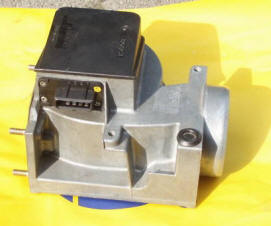MAF repair service
Finally we are able to provide a MAF repair and rebuild service. See our Web shop for order details and pricing.
Please order your MAF repair in our Webshop or contact me for more information.
The MAF Mass Air Flow meter is made and designed by Bosch and uses a very precise technique to measure the actual airflow into the engine at any given moment. It feeds this information to the LH ecu which adjusts the injection duty cycle based on the amount of air entering the engine (and other parameters).
The MAF of a 928 has part number: 928.606.141.00
Bosch MAF for model year 84-95 is 928 is 0 280 214 001, superseded by 0 986 280 124 (rebuilt with this part number). And in exchange service: 92860614100 or 928606141X
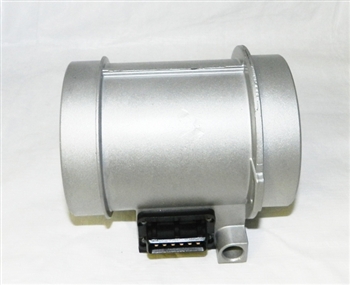
This cross references to:
BMW 13 62 1 311 950 , superseded by 13 62 1 466 353, which is for '91-93 E34 M5 3.6 with cats
BMW 13 62 1 715 888, M5 without cats
VW (VOLKSWAGEN) 035 133 471 AC - '85 Audi 20-valve Turbo quattro.14PC07
AM4001
FDM769
Many MAF in our 928 are off specs, and therefore the 928 lost power or runs badly. It is a slow process and an almost failing MAF is hard to check.
What happens sometimes is that the MAF feeds absolutely no data to the ecu. The no-data scenario is simple: the LH responds by using a fixed duty cycle of 3.5ms at lower rpm's and a 6.3 ms cycle at rpm's above 2000. Just enough to get you home with a broken MAF. But driving the car in this situation is not really easy as the gas pedal (YOU) must manage the air/fuel ratio. Especially moving from standstill is hard if you have an automatic gearbox.
But what happens when the MAF is not completely dead, but sends wrong information?
That is a completely different story. The LH thinks there is more or less air flowing into the engine and adjusts the injection cycle in a wrong way. This leads to total lack of power, massive fuel consumption, bad starting, stalling, high idle or almost no idle. The engine runs better with a disconnected MAF.
Here's the best way to approach the MAF troubleshooting: How to test the MAF yourself
We have successfully replaced the MAF's old-style hybrid electronics by a modern design of our own, we are able to rebuild most of the MAF components, and we are able to adjust the MAF so that it is completely according to factory specs. The final action we do is put it in our wind tunnel and make a performance test, comparing it to factory specifications. Adjust accordingly to make it perfect again.
Feel free to ask about our pricing and have your MAF tested or rebuilt.
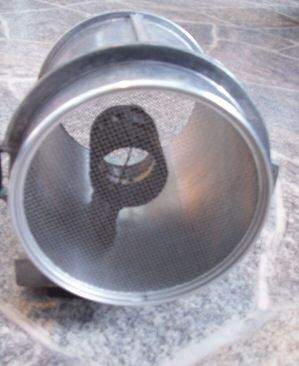
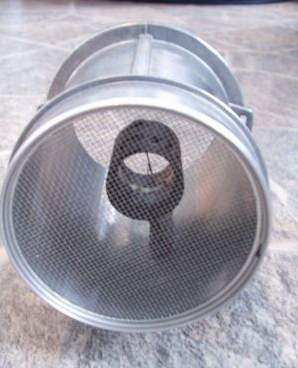
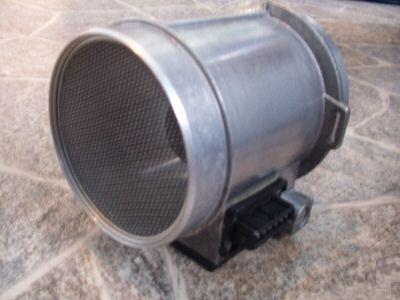
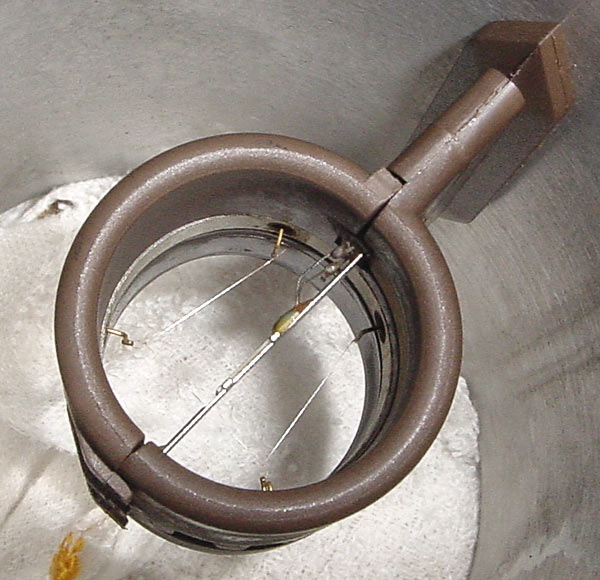
Here's an example of what a bad MAF output looks like.
The MAF (LMM) in question was still running more or less ok but performed badly and the owner had wasted tons of money on diagnosing the spurious problem.
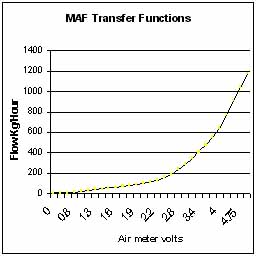
How
to test the MAFs yourself and How MAFs work
The MAF's are vital to the proper function of the engine. The engine can
never work better than its MAF's.
The MAF (Mass Airflow meter) is located in the 928 intake. The MAF's
report to the Engine Electronics (LH ecu) the amount of air that is
drawn into the engine. The LH uses this, engine temperature and rpm to
calculate how much fuel to inject. The way the hotwire MAF is designed
makes it use the actual air density and thus manifold air pressure as
well.
Vital and reliable as the MAF's are, those have to be _really_ bad before you
actually get a stored fault-code in your fuel ecu.
The functional test by our diagnostic tester just tests the MAF´s at idle
with the car standing still.
In my experience that says absolutely nothing
about how they perform at WOT (Wide Open Throttle).
MAF's typically last 50,000 miles before getting so contaminated it
affects 928 engine performance. The 928 has a burn-off feature to get rid
of deposits on the hot wire.
There are 3 methods to test the 928 MAF yourself:
Method A - using the instrument
cluster of the car
Set the digital dash (assumed that you have one, so MY 89-) to fuel
consumption per hour.
With the engine fully warmed up, drive several WOT (wide open throttle)
accelerations. Notice the fuel flow per hour numbers. If everything is
ok the numbers should increase continuously to about 70 liters per hour
at WOT at 6300 RPM. (don't worry about bouncing into the rev-limiter)
The fuel-flow is directly proportional to the MAF reading reported to
the Engine Electronics, so if the Fuel-flow is correct, the MAF's are
most likely correct too. To be able to compare your fuel-flow readings
with other people's readings. Be aware that temperature and atmospheric
pressure do make a difference.
Method B - using our Porsche 928
diagnostic tool
Connect the tool to the diagnostic terminal. Start the engine, connect to the LH
ecu, select actual values from MAF and take a reading form the MAF. Make
a note at various rpm's. Compare these with our reference table or any
other known good car. Be aware that clogged air filters make a
difference. Use the MAF's burn off feature a few times and take a new
reading to get more accurate average readings.
If it is ok at low RPMs, but presents a low output at higher RPMs, try the MAF cleaning
procedure and the retest immediately. If this improves the numbers you
know 100% there is (or if the cleaning was very successful used to be) a
MAF problem. This does not say it is the only problem, but the car can
never run better than its MAF.
Method C - using our Porsche 928
diagnostic tool
Have us test the MAF on our flow bench. We will provide a flow
characteristic showing its output compared to our reference.
Symptoms of bad MAF
In degree of malfunction of the MAF's possible symptoms are:
High Lambda values at idle (lean air-fuel-mixture)Low Lambda values at idle (rich air-fuel-mixture)
LH reports lean/rich signal from Lambda
Engine hesitation at high RPM
Engine misfire at high RPM
Bad idle, unstable
High idle, gradually climbing up to 1400 RPMHigh Idle, 1000 rpm steady
Suddenly engine shutoff when exiting from freeway
Low idle, as low as 500 RPMHesitating badly, and failing to accept gas at 4000 RPM
High fuel consumption, black smoke in exhaust
Low on power, lazy, hesitation
Engine going into limp-home mode at high RPMPermanently glowing platinum wire as soon as contact is switched on
How the MAF's work
The MAF's have a non-heated temperature sensor and heated temperature sensor. The latter is made of a very thin wire of platinum metal. The wire is heated to about 200 deg C, and its temperature is continuously monitored and the heating current is controlled so as to keep the wire at this temperature. The more air that passes the wire on its way into the engine, the more the wire will be cooled. The electrical current needed to maintain the sensor wire at 200 deg C, is directly proportional to the amount of air that passes it, and also depends on the temperature of the air (hence the non-heated temperature sensor).
The electrical current and the air temperature are measured, and the corresponding air-flow is defined and reported to the engine electronics, the fuel injection ecu adjusts the fuel injection cycle to match the amount of airflow (oxygen) for the engine to perform optimal.
How MAF's clean themselves
Once in a while the MAF will run a very high electrical current for a few seconds through the platinum sensor wire, so the wire gets red-hot (1000 deg C). This burns off much of the contaminants, and probably help keep the MAF working much longer between manual cleaning or replacement intervals.
How MAF's fail
With time the MAF platinum-wire gets fouled with contaminants settling from the rapidly passing intake-air. These contaminants acts as thermal insulation on the wire. The effect is that the wire will not be cooled as much as it should by the air-flow, and thus reports too low air-flow to the engine electronics. The engine electronics in turn uses this too low air-flow number when calculating how much fuel to inject. The fuel injection will be too low, and the air-fuel mixture in the cylinders of the engine will be lean.
Many 928 owners have reported K&N oiled intake air filters to cause MAF contamination.
CHECKING MAF's
Either run our UDT/PDT series diagnostic tool test procedure for MAF testing at idle and increased idle RPM, or use this (IMHO far more accurate and reliable) procedure to measure MAF output voltages with engine off:
(Better still use both methods: road test LH, and direct voltage. Then compare the results.)
What MAF do I have in my 928?
The MAF was introduced in 1983 RoW Porsche 928 model.A - Any - 928 fitted with the Bosch LH Jetronic system. This includes all 1984-86 UK S2 and Euro "S" (except cat equipped German cars), and all Worldwide S4, GT and GTS models. The LH system was also fitted to the US market 32 valve 5 liter in 1985 and early 1986.
The same Bosch MAF is used in all these cars, Bosch part number 0280 214 001, Porsche part number 928 606 141 00
The same MAF was also used in the BMW E34 M5 3.6 model MY 1988-1992 (and one rare Audi Quattro 1985 I believe).
The earlier versions had the vane type Airflow meter like this:
This vane-type airflow meter is also used in 944, and 911, and the US versions 928 up to 1986 (M28/19 and M28/20). We can not rebuild this unit, but we rebuild the MAF based on the hotwire technology used in a 928 and 968.
MAF TESTING - DIRECT VOLTAGE METHOD
0. Remove the LH connector and lookup the MAF output signal and ground signal. Connect a good DVM to measure the output. Put the DVM into mV mode and keep a spreadsheet or note paper on standby.
1. Ignition on
2. Engine not running
3. On each MAF measure DC voltage between
pin 3 (ground) and pin 5 (signal)
4. Reading should be about 1.7 to 1.75 V. The dirtier the MAF the higher the voltage will be.
5. Start the engine, and drive the car until fully on operating temperature.
6. Re-test 4) Value will drop to approximately 1.7 V.
7. Make a full test cycle at idle, running various rpm's as indicated in our spreadsheet. This gives a good insight of the output compared to our reference MAF and other benchmarks.
8. After running the engine over 3500 rpm you can see the MAF do a burn off cycle. You need to remove the air filter and air filter box to be able to see this. It is visible in a low light environment.
If this procedure gives a reading in step 4,6 or 7 that is outside tolerance the MAF is definitely contaminated or otherwise damaged. Possibly the electronics have drifted from specifications.
`**


